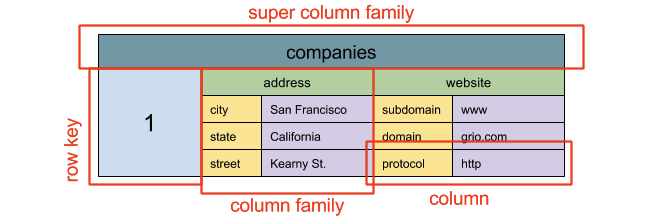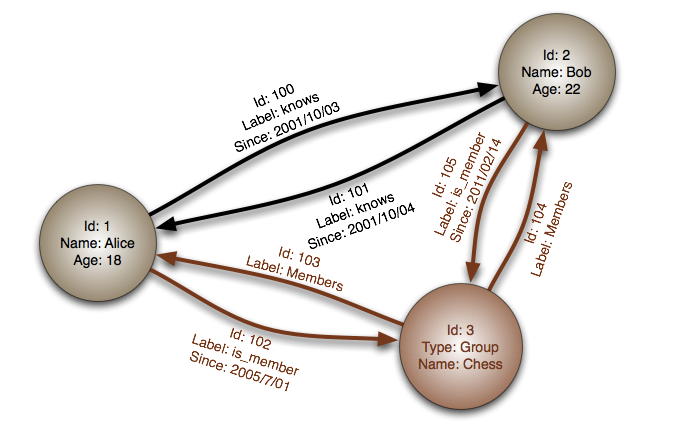Databases
SQL
Relational database management system (RDBMS)
- stored on disk to be persisted
- usually use B+ tree
Why SQL
- If the data to be stored is structured
- If ACID properties are required
- If the size of the data is relatively small and can fit on a node)
ACID
- Atomicity
- each transaction is all or nothing
- transaction fail if it did not complete
- Consistency
- Any transaction will bring the database from one valid state to another
- constraints set by the database, such as foreign key constraints
- Isolation
- Executing transactions concurrently has the same results as if the transactions were executed serially
- Durability
- Once a transaction has been committed, it will remain so
Methods of scale
Replication
- Potential loss of data if the master fail before replication
- If write is frequent, the read replicas can get bogged down by replaying writes, and can't do much of reads
- Increased slaves/nodes -> more replications -> increased latency
- Hardware cost and complexity
Master-slave replication
- The master serves read and write
- If master goes offline, the system will become read-only mode util a slaved is promoted to a new master
- Slaves only serves read
- Slaves and replicate to additional slave in tree-like fashion
Disadvantages
- Additional logic required to promote slave to master
- Higher stale data, mainly used if user are from vastly different geo locations
Master-master replication
- All masters servers both read and writes
- If either goes done, system remains to operate
Disadvantages
- Need load balance or change on application logics to know where to write
- Most master-master systems are either violate ACID or increased write latency due to synchronisation
- Need to resolve conflict when writing on multiple nodes
Federation
- Or know as functional partitioning, splits the database by functions
- Rather a monolithic database, you could have three: forums, users, and products
Advantages
- Less read and write request to each -> less replication lag
- Improve cache hit, since larger proportion of data can be stored in memory
- Can write in parallel to further efficiency
Disadvantages
- Not efficient if schema requires huge functions or tables
- Update logic to know where to read and write
- Joining from two databases is more complex
- Hardware complexity
Sharding
- Distribute data across difference databases such that each database can only manage a subset of the data
- Usually use user's last name or geographic locations
- MySQL and Postgres do no support sharding natively
Advantages
- Less read and write request to each -> less replication lag
- Improve cache hit, since larger proportion of data can be stored in memory
- Can write in parallel to further efficiency
Disadvantages
- Update logic to know where to read and write, result in complex SQL queries
- Joining from multiple shards is more complex
- Data distribution can become lopsided in a shard. For example, a set of power users on a shard could result in increased load to that shard compared to others.
- Rebalancing adds additional complexity, can use consistent hashing to reduce the complexity
- Hardware complexity
Denormalisation
- Redundant copies of the data are written in multiple tables to avoid expensive joins.
Disadvantage(s):
- Data is duplicated.
- Constraints can help redundant copies of information stay in sync, which increases complexity of the database design.
- A denormalised database under heavy write load might perform worse than its normalised counterpart.
SQL tuning
Important to benchmark and profile to simulate and uncover bottlenecks
- Benchmark - Simulate high-load situations
- Profile - tracking performance issues
Optimisations
Tighten up the schema
- Avoid BLOB storage
- Use CHAR instead of VARCHAR for fixed length strings
Use good indices
- Columns that you are querying (
SELECT,GROUP BY,ORDER BY,JOIN) could be faster with indices. - Indices are usually represented as self-balancing B-tree that keeps data sorted and allows searches, sequential access, insertions, and deletions in logarithmic time.
Avoid expensive joins
Tune the query cache
NoSQL
Why NoSQL
- If the data to be stored is unstructured
- If there's a need to serialise and deserialise data
- If the size of the data to be stored is large
- Favour eventual consistency
- limited by the scale
BASE
- Basically available - the system guarantees availability.
- Soft state - the state of the system may change over time, even without input.
- Eventual consistency - the system will become consistent over a period of time, given that the system doesn't receive input during that period.
Key-Value store
- Redis, DynamoDB
- For rapidly changing data
- Just like an hash-map
- flat in nature
- used for session oriented applications
- Maintain keys in lexicographic order, allowing efficient retrieval of key ranges.
Document Store
- MongoDB
- For high flexibility, and occasionally changing data
- such in JSON, XML, binary formate
- key points to a hierarchical structure
- unstructured catalog data
- Provides APIs or a query language to query based on internal structure of the document itself
Wide Column Store
- Cassandra, Bigtable
- high availability and high scalability
- for large volume of write
- don't need to update and read a lot

Graph database
- network structure such as social media networks
- social applications
- Most can only access with REST APIs

SQL or NoSQL
Reasons for SQL:
- Structured data
- Strict schema
- Relational data
- Need for complex joins
- Transactions
- Clear patterns for scaling
- More established: developers, community, code, tools, etc
- Lookups by index are very fast
Reasons for NoSQL:
- Semi-structured data
- Dynamic or flexible schema
- Non-relational data
- No need for complex joins
- Store many TB (or PB) of data
- Very data intensive workload
- Very high throughput for IOPS
Sample data well-suited for NoSQL:
- Rapid ingest of clickstream and log data
- Leaderboard or scoring data
- Temporary data, such as a shopping cart
- Frequently accessed ('hot') tables
- Metadata/lookup tables